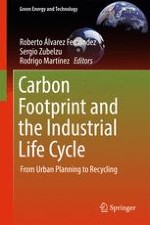2017 | OriginalPaper | Chapter
9. Do Municipalities Have the Right Tools to Become Zero Carbon Emissions Cities? ACCENT, a Pan-European Decision-Support Tool to Take Refurbishment Decisions at City Scale Based on Buildings Energy Performance
Authors : Carolina Mateo-Cecilia, Vera Valero-Escribano, Miriam Navarro-Escudero
Published in: Carbon Footprint and the Industrial Life Cycle
Publisher: Springer International Publishing
Activate our intelligent search to find suitable subject content or patents.
Select sections of text to find matching patents with Artificial Intelligence. powered by
Select sections of text to find additional relevant content using AI-assisted search. powered by
